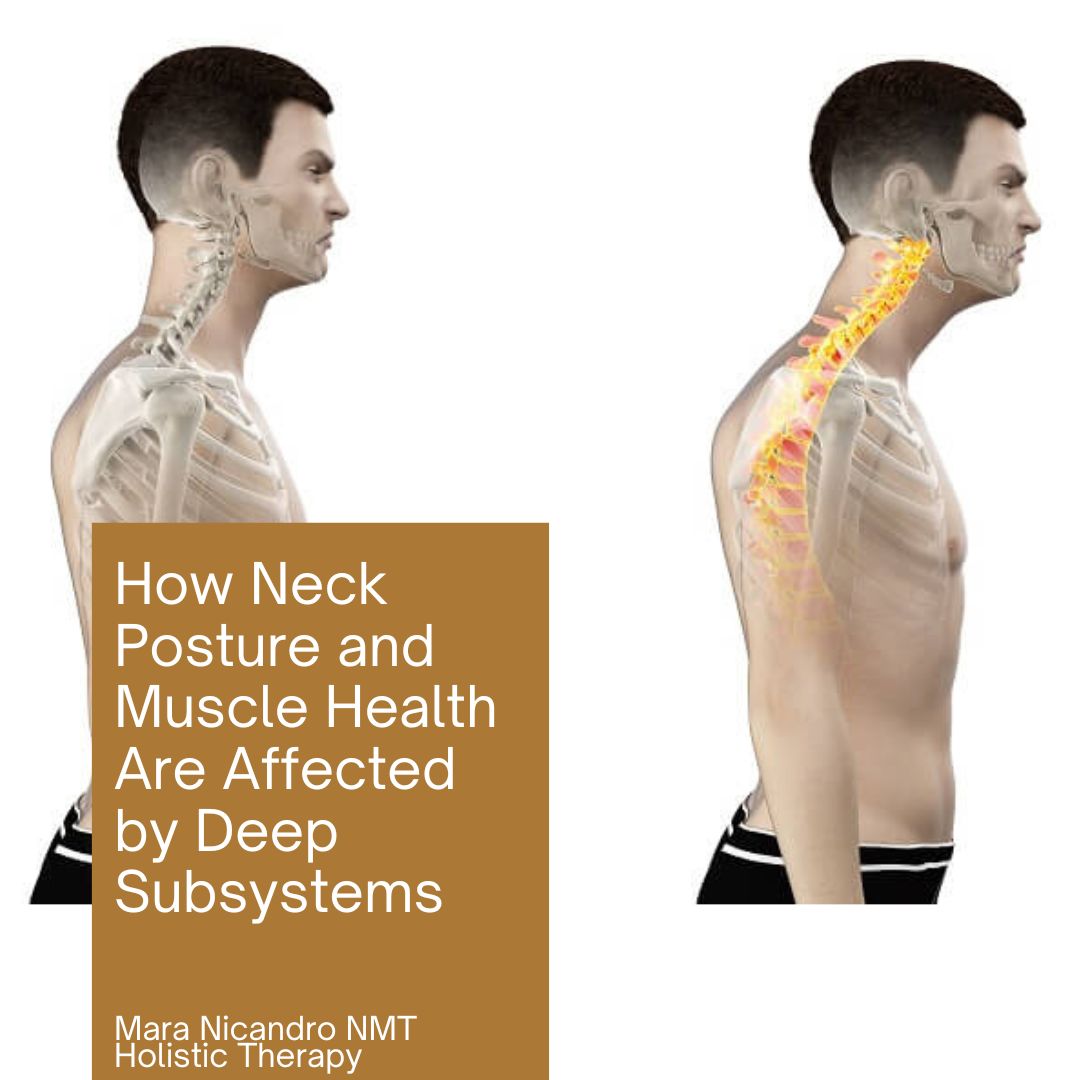The Impact of the Deep Longitudinal Subsystem on the Trapezius Muscle and Forward Head Posture
The Deep Longitudinal Subsystem (DLS) is a vital network within the body that supports movement and stability. This system, crucial for activities like walking and bending, includes key muscles that work together to stabilize various joints and the spine. However, imbalances or overactivity within the DLS can lead to issues such as forward head posture, impacting the trapezius muscle and overall musculoskeletal health.
Understanding the DLS
The DLS comprises several important muscles: the erector spinae, multifidus, thoracolumbar fascia, sacrotuberous ligament, biceps femoris, and peroneus longus. These muscles stabilize the tibiofibular joints, hip joints, sacroiliac joints, and the spine. They also assist in proprioception, adjusting muscle recruitment based on movement load and stretch.
Functions of the DLS
– Concentric Function: Helps lift from a forward bent position and assists lumbar hyper-extension during gait.
– Isometric Function: Stabilizes the tibiofibular joints, hip joints, sacroiliac joints, and spine.
– Eccentric Function: Decelerates leg swing, impact during heel strike, forward bending, and ankle inversion.
Impact on the Trapezius Muscle
Overactivity in the Deep Longitudinal Subsystem (DLS) can disrupt the Posterior Oblique Subsystem (POS), affecting muscle balance, including the trapezius. This imbalance often leads to forward head posture, which puts additional strain on the trapezius, causing neck and shoulder pain, discomfort, and limited mobility.
Forward Head Posture and Its Effects
Forward head posture shifts the head’s center of gravity forward, causing the trapezius and other neck muscles to work harder to maintain balance. This strain can lead to muscle fatigue, tension headaches, and long-term issues such as cervical spine degeneration.
Breathing, Vagal Tone, and Lymphatic Health
Effective breathing enhances oxygen flow and reduces stress, positively impacting vagal tone. Improved vagal tone regulates heart rate, digestion, and overall relaxation. Efficient breathing also supports lymphatic health by promoting fluid movement, which is essential for immune function. Enhancing one aspect of health can lead to overall body improvements.
Self-Care Tips for Improving Posture and Trapezius Health
1. Eye Movement Exercises: Incorporate blinking exercises to reduce strain from digital devices. Regular blinking helps spread tears evenly, reducing dry eye symptoms and promoting relaxation, which can improve head posture.
2. Chewing and Gargling: Chewing food thoroughly and gargling while brushing your teeth activates mid-face muscles, including the cheek muscles. This can help maintain proper head alignment and reduce trapezius tension.
3. Breathing Techniques: Practice deep, diaphragmatic breathing to engage the core and stabilize the spine. This can help maintain proper posture and lessen the load on the trapezius.
Health Tip
To alleviate digital eye strain and support better posture, engage in eye movement exercises, including frequent blinking. Chew your food thoroughly and gargle to activate cheek muscles and support head alignment, reducing trapezius strain. This holistic approach can enhance overall musculoskeletal health and prevent injuries.
Maintaining a balanced and well-functioning DLS is crucial for proper posture and preventing musculoskeletal issues. By understanding the relationship between the DLS, trapezius muscle, and forward head posture, and by incorporating simple self-care practices, you can support your body’s health and well-being. Remember, self-care is essential for health, and small steps towards better posture can lead to significant long-term benefits.
Further Reading
For more insights into holistic strategies for managing musculoskeletal pain and posture, visit
[Holistic Strategies for Menopause Musculoskeletal Syndrome]
Research Support
1. Blinking exercises can improve blink patterns and alleviate dry eye symptoms, potentially reducing forward head posture caused by eye strain.
2. Proper breathing techniques and core engagement are shown to improve postural stability and reduce neck strain.
Understanding the interplay between different subsystems in the body allows for a holistic approach to health that addresses both the causes and symptoms of musculoskeletal pain.
Connecting the Dots: A Holistic Approach to Health
No body system works alone—each affects the others. The Deep Longitudinal Subsystem (DLS) impacts not just posture and muscle health, but also breathing, chronic tension, and lymphatic drainage. Poor posture can restrict breathing, increase muscle tension, and slow lymphatic flow.
Taking a holistic approach by improving DLS function supports better breathing, reduces tension, and enhances lymphatic health. This balance helps regulate emotions and improves vagal tone, leading to overall better health and well-being.

